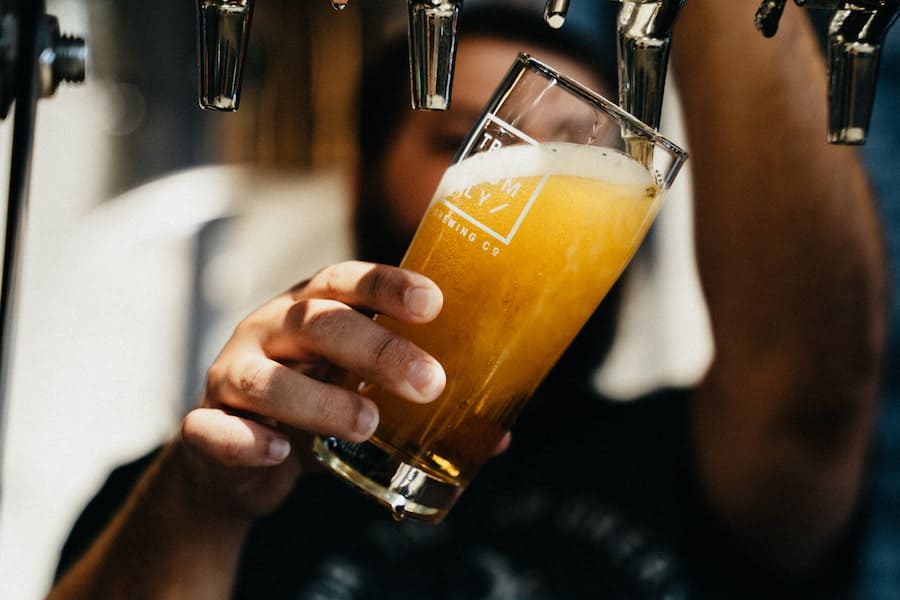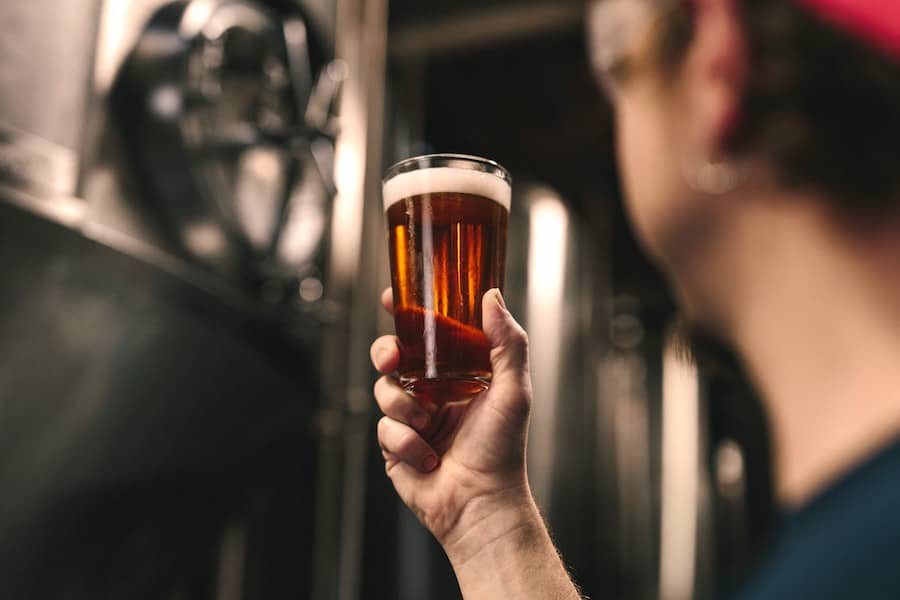If you buy something through a link in our posts, we may get a small share of the sale.
Fermentation could be a confusing process, especially for young brewers. You’re often questioning whether you are doing everything right or not or how the beer would turn out. In this article, I will answer one of the most common questions asked by new brewers: How long does fermentation take?
Contents
How Long Does Fermentation Take?
Typically, fermentation takes 7 to 14 days for most beers. However, this time frame depends on several factors such as the type of beer being brewed, -ale or lager-, the strength of the beer, the temperature at which it is being brewed, and the quantity of yeast used for fermentation.

The fermentation process is closely followed by the storing of the beer in bottles, after which they are primed and left to ferment again. The beer is then left to clear before it is packaged into bottles or jars.
Depending on the factors involved, it could take anywhere between 4-6 weeks before the beer is ready for drinking.
What Is the Process of Fermentation?
Fermentation is the process through which the glucose in the wort is converted into ethanol alcohol and carbon dioxide (CO2). This process includes a step-by-step routine carried out when fermenting beer, beginning from the extraction of wort to the transfer of beer out of the fermenter. Here are the major aspects of the process:
Wort Extraction
The process of beer fermentation begins with the extraction of the wort, which is the liquid remains from the mashing procedure. The wort contains sugars such as maltose and maltotriose which are then fermented to produce alcohol and carbon dioxide.
Transfer Into Fermenter
The wort, after cooling, is transferred into a fermentation container to which yeast has formerly been added. It is with this yeast that the sugars in the wort are broken down. The beer stays in the fermenter until fermentation is complete.
Temperature
The temperature at which the beer should be maintained after it is transferred into the fermenter differs based on the type of beer. For example, for ale fermentation, the temperature should be between 62-75 degrees Fahrenheit and for lager fermentation, between 46-58 degrees Celsius.
Deciding on what temperature to keep the beer at could be quite confusing. Generally, the higher the temperature, the faster the fermentation. However, you do not want it too hot, as this will prove stressful for the yeast, while too cool on the other hand will cause the yeast to get sleepy.
Measurement of Gravity
It is best to measure the specific gravity of the mixture immediately after the wort is poured into the fermenter. It should also be measured more times during the process both as a determinant of alcohol levels, and to give an idea of when fermentation would be complete.
Letting Out of Air
No air should be allowed into the fermenter during the fermentation period. However, carbon dioxide can be let out through a narrow pipe. This pipe does not allow in any oxygen as a result of the outflow of carbon dioxide.
As time goes on, when the specific gravity reaches a particular, pre-established level, this vent can then be closed, causing a build-up of carbon dioxide that makes the beer carbonated.

Yeast Settling
As fermentation draws to completion, the yeast in the beer settles to the cone-shaped bottom of the fermenter. This yeast can be easily removed and kept for reuse until it is mutated.
Cooling and Transfer
After fermentation, the beer should be cooled to about 35-40 degrees Fahrenheit. This helps the rest of the yeast and other unnecessary proteins settle to the bottom of the fermenter. After this settling, the beer is extracted, filtered, and then transferred to another container.
What Factors Affect the Length of Fermentation Period?
The fermentation period varies majorly as a result of the influence of three principal major factors, which are the yeast used, the strength of the wort, and the temperature:
- Yeast
- Wort
- Temperature
Yeast
The amount of yeast pitched determines to a large extent, the length of time it would take for full fermentation to occur. The amount of yeast to be used is largely dependent on the quantity of wort and the type of beer that was brewed.
It is advisable to make use of yeast that has been used in a previous fermentation because it adapts more quickly to the wort, thereby quickening the process.
Wort
The strength of the wort is determined by the amount of sugar it contains, and the level of this strength determines how quickly the yeast can dissolve it to produce ethanol alcohol and carbon dioxide. Typically, the lesser the strength, the lesser time it takes to fully ferment and vice versa.
Temperature
Temperature greatly affects yeast. As mentioned earlier, too high temperature stresses the yeast, causing excessive fermentation that would be difficult to condition, and too low temperature causes the yeast to go inactive. It is generally advisable to use the mid-range of required temperatures while fermenting to ensure you are on the safe side.

Related Questions
How Do I Know That My Beer Has Fermented Completely?
One way to know whether your beer has been completely fermented is by using a hydrometer or refractometer, which is the equipment used to check the amount of sugar in the beer.
Another way of knowing beer has fermented and is ready for packaging is if the specific gravity of the mixture remains the same for a couple of days.
What Should I Do After Fermentation?
When you are convinced your beer has fermented completely, you can then go on to reduce the temperature and give it a few days for the rest of the yeast to settle and for the beer to clear out.
Can I See What My Beer Looks Like During Fermentation?
It is not advisable to open up your fermentation container to see what the fermentation process looks like, as this would allow an in-flow of oxygen into the container, which is bad for fermentation.
If you would like to see what is going on during the fermentation process, you could purchase a transparent fermenter. This way, the beer can be monitored without being exposed to oxygen.
What Is Secondary Fermentation?
Secondary fermentation is the process of transferring your finished beer from the fermenter to another container for it to ferment a second time. This period of this could range from a couple of days to months.
Conclusion
The process of fermentation is one of the most important aspects of the beer brewing process. Thankfully, it is a relatively easy process for the brewer since it is mostly facilitated by the yeast. The duty falls upon you, however, to ensure that the right conditions are in place to enhance a good fermentation process.

